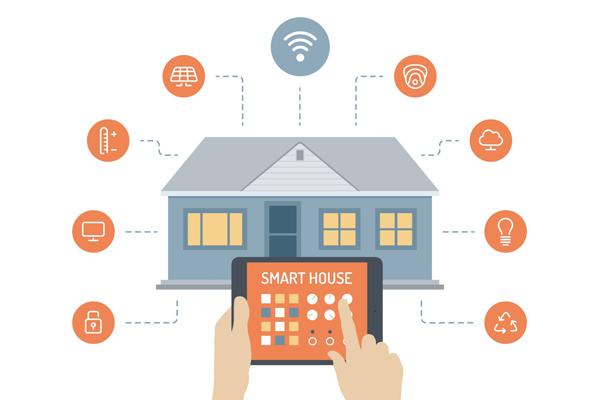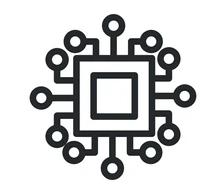Intelligent Revolution of Smart Homes: Convergence of AI and IoT
As artificial intelligence (AI) and the Internet of Things (IoT) technologies merge, smart homes are rapidly evolving from simple automation to comprehensive intelligence. The smart homes of 2024 are no longer just individual devices; they are complex ecosystems composed of various chips and sensors working in harmony to provide a personalized, secure, and energy-efficient living experience. With the proliferation of smartphones and wireless networks, the convenience of smart homes is now within reach.
Trends in the Intelligent Transformation of Smart Homes
The intelligent transformation of smart homes is reflected in the following areas:

1. Smart Security: AI-integrated security systems can remotely observe and differentiate between harmless and potential threats, such as the temperature measurement feature integrated into smart doorbells, assisting homeowners in screening visitors during the pandemic.
2. Personalized Homes: Systems recognize residents through biometric data and automatically adjust lighting, temperature, and music to meet individual needs.
3. Smart Kitchens and Bathrooms: Smart refrigerators and bathroom cabinets monitor the consumption of items through built-in sensors, and preventive maintenance sensors detect issues before they arise.
4. Energy Management: Smart thermostats adjust temperatures according to residents' habits, saving energy and reducing expenses. Moreover, sensors built into air purifiers, water filtration systems, and air conditioning units issue maintenance alerts based on actual usage and operational cycles, significantly improving the efficiency and accuracy of home maintenance.

Key Chips and Their Functions
The intelligent transformation of smart homes largely depends on various types of chips that collaborate to achieve home automation and intelligence. Here are some key chip types and their roles:
1. Main Control Chips (MCU & SoC): These chips are the core of smart home devices, responsible for processing and controlling the main functions of the devices. MCUs (Microcontroller Units) and SoCs (System on Chip) typically integrate CPUs, memory, and other necessary functional modules to perform complex control tasks. For example, the STM32 series from ST, featuring ARM Cortex-M0 MCUs with embedded flash and SRAM, such as the STM32F030K6T6, is widely used in consumer appliances, printers, alarm systems, and HVAC. NXP's EN6347QI with an ARM Cortex-M0+ core is widely used in IoT, smart homes, industrial control, and more. Nordic Semiconductor's NRF70 series SoC, such as the NRF52832-QFAA-R, is widely used in IoT applications like smart speakers, robotic vacuum cleaners, and smart air conditioners.
2. Communication Chips: Smart home devices require internet connectivity for remote control and data exchange. Communication chips such as Wi-Fi, Bluetooth, Zigbee, and NB-IoT chips are responsible for wireless connections and data transmission. For example, the ESP8266 and ESP32 Wi-Fi chips from Espressif Systems are adopted by manufacturers like Xiaomi. Qualcomm's CSR8670C-IBBH-R Bluetooth audio chip is used for wireless connection transmission and control in smart TVs and audio devices.
3. Sensors: Sensor chips can detect environmental changes such as temperature, humidity, light, motion, etc., and convert this information into electrical signals sent to the main control chip for corresponding control operations. For example, the LSM6DS3TR, an Inertial Measurement Unit (IMU) sensor from STMicroelectronics.
4. AI Chips: With the development of AI technology, some smart home devices have begun to integrate AI chips that can perform local data processing and learning, providing more personalized and intelligent services.
5. Security Chips: Smart home systems need to ensure the security and privacy protection of data. Security chips can provide encryption and security certification functions to protect user data from unauthorized access.
6. Power Management Chips: Smart home devices usually require effective power management to optimize battery life or improve energy efficiency. Power management chips are responsible for monitoring and regulating the power usage of devices. For example, the TPS65217BRSLR from Texas Instruments is a powerful, highly integrated, and flexible configurable Power Management IC (PMIC) suitable for portable industrial equipment, medical devices, industrial automation, and portable medical devices.
Challenges in the Intelligent Transformation of Smart Homes
As the functionality of smart home devices continues to expand, so does the demand for data. The significant variation in data usage, from streaming devices to high-resolution security cameras, poses new challenges for memory and storage. To support these devices in efficiently running machine learning algorithms, higher-performance DRAM and larger embedded storage capacities are required.
Conclusion
The intelligent transformation of smart homes is not just an upgrade in technology; it is a change in lifestyle. Smart homes are moving towards a more intelligent, personalized, and energy-efficient direction. With the continuous advancement of chip technology, we have reason to believe that the smart homes of 2024 will be smarter, safer, and more energy-efficient, bringing a more comfortable and convenient living experience to users.









